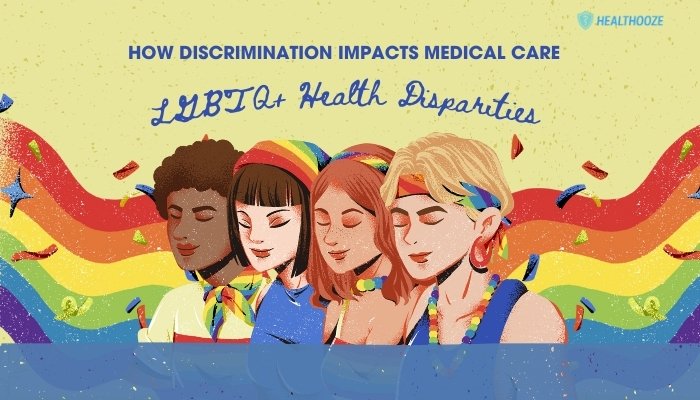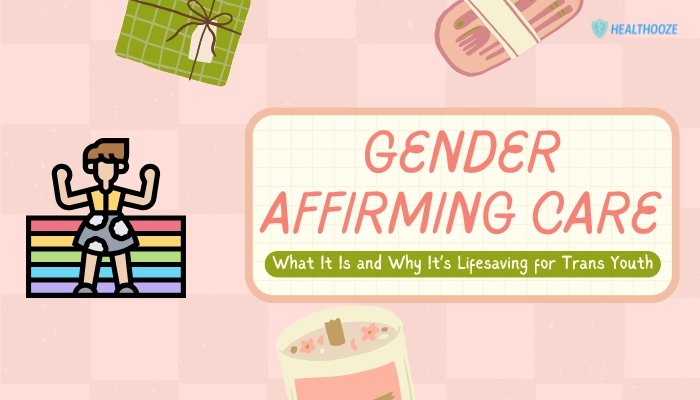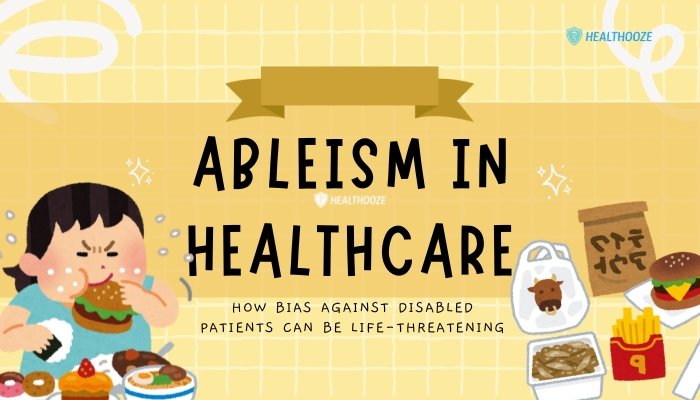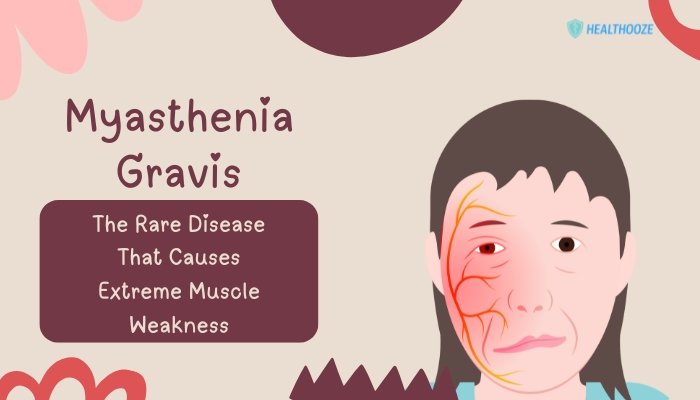Introduction
The LGBTQ+ community includes lesbian, gay, bisexual, transgender, queer, and other sexual or gender minorities. These groups represent a broad spectrum of identities, each shaped by personal, social, and cultural factors.
Yet, they share a common reality: barriers in health care caused by societal stigma, discrimination, and gaps in medical training. These obstacles often result in higher risks for chronic conditions, mental health struggles, and poorer overall health outcomes.
Historically, many LGBTQ+ individuals have faced exclusion from mainstream resources. Such exclusion can lead to mistrust toward providers, avoidance of necessary medical care, and higher chances of late diagnoses. The consequences extend beyond the clinical setting.
Discriminatory laws, limited insurance coverage, and social stigma have far-reaching effects. Addressing these disparities requires an honest look at the structural, cultural, and policy-based factors that contribute to them. This article examines the various ways discrimination impacts LGBTQ+ health and explores solutions that might bridge gaps in care.
Understanding the LGBTQ+ Community
LGBTQ+ is an umbrella term that tries to capture the diverse range of identities related to sexual orientation and gender identity. Within this community, distinct subgroups face different challenges:
- Lesbian: Women attracted to women.
- Gay: Men attracted to men.
- Bisexual: Individuals attracted to more than one gender.
- Transgender: Individuals whose gender identity differs from the sex assigned at birth.
- Queer: A broad term sometimes used as a reclaimed identity for those with nontraditional orientations or identities.
While these definitions help explain basic terms, people may choose labels that reflect personal experiences. Factors such as race, culture, income, and region also shape unique challenges for LGBTQ+ individuals. Without understanding these nuances, medical systems cannot provide culturally appropriate care.
Intersectionality
Many LGBTQ+ people belong to other marginalized groups. Race, ethnicity, disability, or immigration status can compound discrimination. Providers must remember that a transgender woman of color faces different societal pressures than a white cisgender lesbian. Intersectionality underscores the importance of seeing each patient as an individual whose circumstances affect health outcomes.
Historical Context of Discrimination
Discrimination against LGBTQ+ communities can be traced through laws, medical practices, and social attitudes. Until the mid-20th century, same-sex behavior was criminalized in many regions. Homosexuality was long pathologized in psychiatric manuals. Transgender identities were often dismissed or misunderstood. These views led to forced institutionalization, loss of parental rights, and a lack of open, affirming health care.
Stigma in Medical Institutions
Past regulations banned openly gay men from military service or from donating blood. Transgender individuals had to undergo invasive and costly medical processes to change legal documents. These policies sent a message that LGBTQ+ identities were abnormal or unsafe. Health care workers sometimes echoed those assumptions, creating a climate where individuals hid their orientation or identity to avoid judgment or refusal of treatment.
Effects on Health Systems
Such historical biases shaped how hospitals and clinics trained staff. Many providers learned little about LGBTQ+ health, resulting in a lack of clinical guidelines or culturally informed care. In some instances, unscrupulous practices—such as “conversion therapy”—were used despite causing psychological harm. These experiences sowed deep mistrust toward medical establishments, deterring many from preventive checkups, screenings, or urgent care.
Social Factors Contributing to LGBTQ+ Health Disparities
Family Rejection
Coming out can be a vulnerable time. Some individuals face rejection or hostility from relatives who disapprove of their orientation or identity. This rejection can trigger homelessness, financial instability, or a collapse in emotional support—each of which increases health risks. LGBTQ+ youths are overrepresented in homeless populations, and that lack of stable housing affects overall well-being.
Bullying and Violence
Bullying remains a real threat in schools, workplaces, and public spaces. Many LGBTQ+ youths experience harassment from peers or teachers, leading to chronic stress, anxiety, and depression. Adults can also encounter physical violence or hate crimes, especially in places where legal protections are weak. This persistent fear of harm undermines mental health and fosters distrust of institutions, including health care systems.
Social Isolation
Stigma can encourage secrecy or social withdrawal, preventing individuals from building networks that support healthy behaviors. In rural areas, there may be no LGBTQ+ community centers or inclusive social venues. Lack of visibility can intensify feelings of isolation, affecting mental and physical health. Online spaces can offer limited support, but digital networks cannot fully substitute in-person relationships and emotional backing.
Economic Inequality
Economic marginalization is common among LGBTQ+ individuals, especially transgender people who report high unemployment rates and lower earnings. Workplace discrimination, lack of job security, and barriers to promotion add to financial instability. Without steady income, health insurance becomes difficult to obtain. Even with insurance, co-pays and deductibles may still pose hurdles.
Common Health Disparities and Unique Challenges
Although LGBTQ+ health concerns vary, certain conditions and disparities appear more frequently in these groups due to stress, stigma, and structural obstacles.
Mental Health
- Depression and Anxiety: Chronic discrimination can trigger feelings of worthlessness, sadness, and nervousness.
- Suicidality: LGBTQ+ adolescents and young adults are at higher risk for suicidal thoughts and attempts.
- Substance Use: Some cope with stress and isolation through alcohol, tobacco, or other substances, increasing the likelihood of addiction.
HIV/AIDS and Other STIs
Men who have sex with men (MSM) remain at a higher risk for HIV, although infection rates vary by region and demographic group. Factors include limited prevention tools, inconsistent testing, and stigma around sexual health. While HIV is no longer a certain fatal illness due to modern treatments, late diagnoses can still occur if individuals avoid testing out of fear or shame. Other sexually transmitted infections (STIs) also pose risks for those who face barriers to regular screenings.
Cancer Screenings
Some LGBTQ+ patients experience unique risks and screening challenges:
- Lesbians and Bisexual Women: May have lower screening rates for breast and cervical cancer because of reduced contact with OB-GYN services.
- Transgender Individuals: May not receive recommended screenings for body parts not aligned with their gender identity. For instance, a transgender man who retains ovarian or breast tissue may need specific monitoring.
Chronic Conditions
Stress hormones triggered by discrimination can elevate the risk of hypertension, cardiovascular disease, and obesity. Over time, chronic stress drives systemic inflammation. Limited health care access can also lead to unmanaged diabetes or asthma in populations that experience consistent marginalization.
Body Image and Eating Disorders
Gay men have a higher prevalence of body image dissatisfaction, partly influenced by community standards and fear of rejection. Some develop disordered eating patterns like bulimia or anorexia. Meanwhile, transgender individuals may use unmonitored hormone dosages or nonsurgical methods to alter appearance, leading to complications if done without medical supervision.
Impact of Bias and Stigma in Medical Settings
Implicit Bias
Health professionals, even those who consider themselves open-minded, can carry unconscious biases. These biases may influence how they interact with LGBTQ+ patients, leading to:
- Less eye contact or rushed appointments
- Stereotypical assumptions about lifestyles or behaviors
- Underestimation or overestimation of certain risks
Discrimination by Providers
Some LGBTQ+ individuals report direct harassment in clinical spaces. Others experience “microaggressions,” such as repeated use of incorrect pronouns. In extreme cases, providers may refuse to treat them due to personal beliefs, leaving patients to search for alternate care. This is especially dangerous during emergencies or if patients are in remote areas with few health facilities.
Lack of Training
Many medical schools offer limited training on LGBTQ+ health. Providers may not know how to conduct sensitive sexual health histories or understand transition-related care. This knowledge gap can lead to misdiagnoses, inadequate referrals, or failure to address relevant risk factors. Patients often find themselves educating their providers about specific needs, placing added stress on an already vulnerable population.
Consequences
When the health system fails to deliver respectful, informed care, it pushes LGBTQ+ patients away. People may skip preventive care out of fear of judgment or worse. Delayed or avoided treatment can exacerbate diseases, leading to higher morbidity and mortality rates. Over time, mistrust of the system hardens, making it more difficult to rebuild bridges.
Barriers to Care
Financial Barriers
Health insurance can be limited for those whose employers offer no domestic partner benefits or who face job discrimination. Transgender individuals often pay out of pocket for hormone therapy or gender-affirming surgeries if insurance plans do not cover such interventions.
Geographic Limitations
In rural areas or small towns, LGBTQ+ individuals may have trouble finding providers with experience in this field. Specialists in HIV care, transgender health, or fertility services might be hours away. The travel costs add stress, and some fear being recognized by neighbors if local anonymity cannot be maintained.
Legal Hurdles
Regions lacking non-discrimination laws allow health care providers or insurance companies to discriminate based on sexual orientation or gender identity. This fosters uncertainty about whether care will be denied. Additionally, name or gender marker changes can become complicated legal processes, leading to mismatched documents and confusion in medical records.
Language Barriers
If materials or interpreters do not account for nuanced vocabulary around LGBTQ+ identities, non-English speakers may struggle even more. Clear health education in multiple languages is key to bridging cultural and linguistic gaps.
Consequences of Delayed or Avoided Medical Care
LGBTQ+ patients who fear hostility may not seek help until their symptoms reach severe stages. Late diagnoses can lead to:
- Advanced Cancers: Missing recommended screenings for breast, cervical, or prostate cancer can increase the likelihood of diagnosing diseases at advanced stages.
- Unmanaged Chronic Diseases: Diabetes, hypertension, or mental health conditions can escalate when not addressed early.
- Higher Mortality Rates: Emergency interventions become less effective if a patient has waited too long to seek help.
Avoiding care does not only worsen physical health. Emotional well-being also declines when individuals feel unwelcome or fearful of being belittled. The cycle of mistrust perpetuates itself, as negative experiences confirm the individual’s worries about discrimination.
Policy and Legislative Framework
Non-Discrimination Protections
Several jurisdictions have passed laws banning discrimination based on sexual orientation and gender identity. In health care, these policies can:
- Mandate inclusive language in insurance documentation
- Protect patients from being denied services
- Require confidentiality around LGBTQ+ status
However, laws vary widely by state and country. Where no explicit legal protections exist, LGBTQ+ patients face higher uncertainty. Federal guidelines may shift with changes in political leadership, affecting how vigorously such protections are enforced.
Insurance Reforms
Some reforms require insurers to cover gender-affirming treatments or hormone therapy. Others ensure coverage for same-sex spouses. Yet, these measures often face legal battles. Transgender individuals in particular can face coverage denials for procedures deemed “cosmetic” when they are, in fact, critical for mental and physical health.
The Role of Advocacy Groups
Nonprofit organizations often step in where legislative frameworks fall short. These groups provide free legal advice, health education campaigns, and training for medical staff. Advocacy efforts can also push for policy changes or new clinical guidelines. Grassroots activism often shapes the public conversation, reducing stigma and encouraging more providers to gain cultural competence.
Importance of Culturally Competent Care
Cultural Competence in Practice
Cultural competence involves understanding and respecting the social, cultural, and linguistic needs of patients. For LGBTQ+ patients, it requires:
- Recognizing the spectrum of sexual and gender identities
- Using preferred names and pronouns
- Being aware of the specific health risks or screening needs for each subgroup
- Avoiding assumptions about sexual behaviors, partnership status, or family structures
Providers who practice cultural competence create an atmosphere of trust, encourage open communication, and tailor interventions to meet individual needs.
Staff Training and Education
Hospitals and clinics can embed LGBTQ+ health content into medical curricula, ensuring that new professionals enter the field with foundational knowledge. Continuing education workshops can also help current staff correct outdated or biased assumptions.
Inclusive Environments
Inclusivity goes beyond physician behavior. Clinics can display signs or posters that affirm LGBTQ+ identities, stock reading materials for diverse groups, and adopt forms that reflect a range of gender options. Patients notice these details and may feel more at ease sharing personal information. Even small updates—like providing gender-neutral restrooms—signal respect for all identities.
Community-Led Solutions
Peer Support Networks
Local communities often create their own support systems. Peer groups allow people to exchange knowledge about safe providers, mental health coping strategies, and recommended resources. In some areas, groups form around specific concerns, such as HIV support or substance use recovery. These peer-led efforts can reach isolated individuals who may not trust formal services.
Free Clinics and Health Fairs
Some organizations host health fairs aimed at LGBTQ+ populations. They offer basic screenings for blood pressure, HIV, or STIs, alongside educational sessions. Free clinics may also partner with volunteer providers to extend services to those who lack insurance. Such events reduce cost barriers and demonstrate the value of inclusive care in a public setting.
Online Platforms
Social media, forums, and telehealth services can reduce isolation. Telehealth platforms can provide therapy, counseling, or medical consultations in regions with few in-person options. Online communities also help connect people with specialized providers in larger cities, although access to stable internet remains a limiting factor for some.
Collaboration with Local Leaders
In many places, faith institutions, civic groups, or city councils collaborate with LGBTQ+ advocates. These partnerships can lead to broader initiatives—like safe housing projects, anti-bullying programs in schools, or job fairs designed for marginalized groups. Creating a coalition approach ensures that efforts are sustained and integrated into the broader fabric of community life.
Future Outlook
LGBTQ+ health care has made strides in recent years. More providers recognize the need for specialized training, and some countries now ban discriminatory practices outright. Telehealth expansion can address gaps in rural areas, and social media activism continues to expose and challenge biased care. However, progress remains uneven. Political shifts can weaken key protections. Underserved communities, especially transgender people of color, still face disproportionate violence and economic barriers.
The Role of Technology
- Telehealth Growth: Online platforms connect patients with specialists, even if they live in remote areas.
- Data Collection: More health surveys now include questions about orientation and gender identity. This data can improve public health planning.
- Health Apps: Apps for mental health, fitness, or sexual health can include features specific to LGBTQ+ individuals, but privacy concerns need to be addressed.
Ongoing Challenges
- Legal Variability: Laws differ widely, leaving many uncertain about their rights.
- Cultural Resistance: In some areas, misinformation or prejudice remains widespread, limiting acceptance.
- Intersectional Gaps: People at the intersection of multiple marginalized identities often struggle the most in securing respectful, comprehensive care.
Conclusion
LGBTQ+ health disparities underscore the deep impact of discrimination. Past policies and ongoing prejudice shape every aspect of care, from basic checkups to specialized interventions. This environment can force individuals to hide important details about their lives, leading to overlooked conditions and mental health concerns. The result is a cycle of mistrust, delayed care, and worse health outcomes.
Yet, efforts by advocates, providers, and policymakers show that improvement is possible. By investing in culturally competent care, inclusive policies, and robust community support, health systems can begin to reduce these disparities. Each step—from adopting respectful language in clinics to passing protective laws—helps create safer, healthier spaces for all. Tackling these issues is not a single initiative but a multifaceted process requiring collaboration across multiple sectors. With consistent efforts, it becomes more likely that LGBTQ+ individuals will receive the high-quality, affirming care they deserve.
Table: Key Disparities and Strategies to Improve LGBTQ+ Health
| Disparity or Challenge | Strategy for Improvement |
| Lack of Provider Training | Include LGBTQ+ content in medical curricula and ongoing staff education |
| Fear of Discrimination | Implement legal protections against bias and create visible inclusive policies |
| Delayed Screenings and Checkups | Offer free or low-cost health fairs and mobile clinics in underserved areas |
| Mental Health Stigma | Support peer-led counseling groups and increase teletherapy access |
| Limited Insurance Coverage | Expand insurance reforms for gender-affirming care and domestic partner benefits |
| Distrust of Medical Systems | Practice cultural competence and respect pronouns, names, and family structures |
| HIV and STI Risks | Increase routine testing and provide affordable prevention tools (e.g., PrEP) |
| Legal Uncertainty | Enact consistent non-discrimination laws at local, state, and federal levels |
References
- Meyer IH. Prejudice, social stress, and mental health in lesbian, gay, and bisexual populations. Psychol Bull. 2003;129(5):674–697.
- Cahill S, Singal R. Health care reform and equitable LGBT health care. LGBT Health J. 2018;5(2):60–68.
- Fredriksen-Goldsen KI, Kim HJ. Disparities in health-related quality of life. Am J Public Health. 2017;107(8):1332–1338.
- Hatzenbuehler ML, Link BG. Introduction to special issue on structural stigma and health. Soc Sci Med. 2014;103:1–6.
- Reisner SL, Poteat T. Transgender health disparities and gaps in care. Curr Opin Endocrinol Diabetes Obes. 2015;22(2):232–238.
- Phelan SM, Burgess DJ. Medical education and implicit bias. J Gen Intern Med. 2019;34(8):1630–1637.
- Grant JM, Mottet LA. Injustice at every turn: A report of the national transgender discrimination survey. National Center for Transgender Equality. 2011.
- White Hughto JM, Reisner SL. A systematic review of the effects of hormone therapy on psychological functioning and quality of life. Transgend Health. 2016;1(1):21–31.
- Lim FA, Brown DV. Addressing health care disparities in the lesbian, gay, bisexual, and transgender population. Med Surg Nurs. 2014;23(6):383–387.
- Quinn GP, Bowles T. Cancer in lesbian, gay, bisexual, transgender populations: A review of the literature. Cancer J. 2015;21(2):66–71.
- Gonzales G, Henning-Smith C. Barriers to care among LGBT older adults and their providers. J Aging Soc Policy. 2017;29(1):31–46.
- Bauer GR, Scheim AI. Transgender health policy change. Lancet. 2015;386(9999):505–506.







